Options for Folding and Breaking Metal - PODCAST TRANSCRIPT
April 18, 2024 at 12:00 p.m.Editor's note: The following is the transcript of a live interview with Ken McLauchlan and Chad Rowe from MetalForming. You can read the interview below, listen to the full podcast or watch the video.
Heidi Ellsworth: Hello, and welcome to another Lunch & Learn from RoofersCoffeeShop. This is your chance to sit down with your team, gather around during lunch and learn some really great information from the roofing industry. And today, we're talking about metal. Yeah. This is very exciting. We are going to talk about options for folding and breaking metal. That means starting your own sheet metal shop, getting your own equipment, taking that metal forming into your own hands. So we brought the experts from metal forming Chad Rowe and Ken McLauchlan to talk about metal forming, and folding, and breaking metal. Welcome gentlemen.
Ken McLauchlan: Alrighty. How are you? [inaudible 00:01:00].
Heidi Ellsworth: I am great. I'm so glad to have you both here. Before we get into the learning objectives and all, let's start with some introductions. So Ken, can you introduce yourself?
Ken McLauchlan: My name's Ken McLauchlan. I'm the vice president of architectural sales for Metal Forming based in Peachtree City, Georgia. Excited to be here today with you guys.
Heidi Ellsworth: So excited to have you. And Chad.
Chad Rowe: I'm Chad Rowe with Metal Forming, responsible in outside sales and channel partners. So we're also very happy to be here, and excited to get things going. You always bring the energy Heidi.
Heidi Ellsworth: We try, right? And this is a fun topic. Who doesn't like tools and equipment? That's a cool thing, and we're bringing it in to the office for everyone to really understand what it's all about, because trust me, once you go out into that sheet metal shop, you might be out there for a couple hours just watching, and bending, and doing all the things with this great equipment. But before we get started, let's do a little bit of housekeeping. So first of all, you should have your discussion sheet. So put your discussion sheet out in front of you, and as you are going through this Lunch & Learn, be sure to take notes, that you can have a great conversation with your team afterwards. And then get online on rooferscoffeeshop.com, and take the quiz, that you can get your certificate of completion and maybe even get a free lunch on RoofersCoffeeShop.
So let's get started for today's options for folding and breaking metal. Learning objectives for today are considerations for starting a sheet metal shop, utilizing manual equipment and the third learning, objective utilizing powered equipment. So three learning objectives, considerations for starting a sheet metal shop. Second objective, utilizing manual equipment and third objective utilizing powered equipment. So let's get started, and with our first learning objective considerations for starting a sheet metal shop, and you two are the experts. So Ken, let's start with you. What are some of the considerations that all roofing contractors overall should be thinking about if they're bringing in new equipment for bending, and folding metal, or starting a full sheet metal shop?
Ken McLauchlan: Yeah. Heidi and I think that's a great place to start, because I think that's where most of this business starts is everybody sitting around a table one day going, "Okay. I'm here now. Then what? How do I go to the next step? What do I do? The options I had before didn't work," and really dissecting what your market is, who your customer is, whether it's yourself, whether it's an outside supplier, whether it's a vendor that you're dealing with or whether it's custom fabrication. All of those things become things you definitely have to talk about on a regular basis. And then tying that, and get into your operations, and, "What do I have for space"? It seems to be one of the other questions, and Chad and I are going to bounce back and forth on this, because we're really passionate about this. So it's fun for us.
Heidi Ellsworth: Yeah.
Ken McLauchlan: This is the discussion we have on our own.
Chad Rowe: Yeah. And I'm going to throw out, there's one more possibility too, where as that business owner, you may be approached to do fabrication for somebody else.
Heidi Ellsworth: Yes.
Chad Rowe: Could be an existing contractor. Could be an opportunity for a partnership, lots of reasons. So let's go back to talking about that space consideration.
Heidi Ellsworth: Well, and Chad, I want to really touch on that real quick, because I think that is really important, and whether you are bringing in, like Ken was saying to supplement your business on the rooftop, maybe you're going to break your own edge metal, you're doing your own gutters, whatever it may be, whether you're possibly now setting up a sheet metal shop to sell to other folks like you just said. And there's a third option. I've talked to a couple of companies who have said, "We're ready to move out of roofing, but we want to start our own full sheet metal shop, and provide training, and product, and materials for the roofing industry." So there's a lot of considerations there when you're thinking about that market space. One of the things that I'm wondering about too is operations. As you are thinking about your operation, and the people who you have, or your processes, Chad, what should contractors be thinking about that direction?
Chad Rowe: Well, so as far as the operations go, and I'm going to kick it back again, because really, it does start with space. Yes, you have to consider all the different operations and things from beginning from, "How are we going to manage the finances? What type of a software system do we use as an ERP system, or as an accounting system? Is it a QuickBooks?" There's a lot of options out there, all the way down to all the things in between can go to, "What is that final delivery? What is that last step that can be? Is it going in a box? Is the customer coming to pick it up? Am I delivering it? Who is that?" So there's a lot of steps in between, and space becomes a big issue, or is a vital piece of what can I do in my operations based on that space? Ken agree? Disagree?
Ken McLauchlan: Oh. No. I'm sitting here trying to chomp at the bit, and trying not to get too preemptive, but I'm sitting here going, how about, "Am I doing this in my location, or do I have to do this on a job site? Do I have to have the flexibility? Do I have space?" This is the big question we get into constantly with people. If they come out, and they come by, and they do a demo, and they look at things, they're like, "I'm so excited." And they go back, and they go, "I don't know where I'm going to put it, but I know I need it. So now what do I do?" And how does that tie into it? But so many of these applications can be done, and we're going to dive into this deeper in a little bit, but can be done both in a location, or in multi locations, or on a job site.
Heidi Ellsworth: A lot of portable.
Ken McLauchlan: A lot of portable, and a lot of stuff that originally wasn't portable, that's now available for it. And maybe it's not the primary. Maybe it's secondary. Maybe it's for unique fabrication depending on the process that you're in. There's all different kinds that tie into that too as well. But operational wise, I think Chad hit some key things like talking about how you're going to manage this process. Most successful contractors have some sort of a program, all right? It's whether their accounting system, or whatever it is, how does that tie into this system? Is it going to work? Do they want to have something they can import details into, rather than just carry out? And I make jokes about it, but I remember coming back from the job site, and having a two-by-four, and a piece of drywall and that was my list. And I handed it to the foreman in the shop, and he looked at me like, "What is this?" And I'm like, "Hey. I wrote it down. Be grateful." And now we have software that we can import details from a job site.
Chad Rowe: Years ago, years ago I was handed a magazine with the page turned over that somebody had an advertisement of, I don't remember what the exact thing was, but we'll say it was a K-Style gutter. And they gave me this picture, and said, "Can I make this?" So lots of ways of getting that stuff in. And here's a unique situation that Ken and I have recently been part of as far as operation space, how things and how people operate differently. Customer is in a location A, but real estate is too expensive. So manufacturing is going to be two hours away. So there are a lot of considerations that go into operations and space, absolutely.
Heidi Ellsworth: Yeah. And I think I love that the technology part of it, because that's changing so fast every single day. In fact, you gave me a flashback when you're talking about a list on a two-by-four. My dad used to do that to us all the time. But really looking at that, but I think one of the other things too, along with that, a big consideration is labor. Sometimes there can be labor savings, because you have the machines instead of doing it manually, but labor is key, and let's talk a little bit about that consideration. When you're thinking about expanding your business, what labor do you need to be looking for? Is it going to be specific? It's going to be a different set of talent that you need to bring in? Ken maybe start us off on that.
Ken McLauchlan: Yeah. I think when you look at this, and historically we look back and say it was the broken guy that was in the shop. 30 years ago, it was the guy that it was probably the one couldn't get up on the roof anymore as much. And there was a lot of math that was involved back then, and a lot of layout that was done by hand, and building templates. In today's world, there's software solutions that can help that contractor do what they need to do. I think there's one more thing I got to add that just flashed in my head that 30 years ago, we talked about everybody was walking in the shop and everybody was communicating in English, and then we added a second language was Spanish. But now, we walk into a lot of shops, and we make comments about it that we have a lot of Eastern European craftsmen that are here now that speak in different dialects that you have to be able to deal with that as well.
Heidi Ellsworth: Right.
Ken McLauchlan: When they come in, and what they call it, versus what we call it is a different concept too.
Chad Rowe: I'm going to throw one more. I'm going to throw one more language out there, and that's English to English, because the guy who has been doing this for 30 years, he's maybe dealing with somebody who is a second year apprentice and what's the terminology, what words he's using is what he learned 30 years ago. And that's maybe not the same as what somebody who's 24, 25 years old understands.
Ken McLauchlan: All right. You didn't realize that was a direct kick on Ken. When people walk into [inaudible 00:11:28], and they go, "Hey. We're making this." And, "I call that that." And they're like, "They don't call it that anymore." And I'm like, "Okay. Whatever."
Heidi Ellsworth: I hate to tell you this, but that is across the industry. We see that all the time. It's a lot different from on, Oregon to Georgia too, what we call things and how we do it. So you're right. I think that's such a key point. And as we're looking through this really as all of you are thinking about these considerations for starting your own sheet metal, or just even starting to break and fold, you need to really be able to think about do you have the market? What are you going to do with it? Is it going on your own jobs? Is it going? Are you going to be selling it? The operations and the space, finances, we have a whole podcast on finances and how to finance a sheet metal shop. So be sure to check that out. We won't go into that too far today, but that's definitely a consideration and then of course, your labor crew.
So gentlemen, let's get into the fun stuff. Not that that wasn't fun, but let's get into the fun stuff of talking about the types of equipment for consideration. So our second learning objective is utilizing manual equipment, and I think this is going to be a very fun learning objective and comment. So I'm going to let Chad start on this one. Chad, what are some of the things to think about? Okay. And let's set the stage, right? When we say manual equipment, let's talk about what that is, what is manual equipment and how it's different, and is it a good place to start?
Chad Rowe: Yes. So I think there is a lot to talk about in regards to manual equipment. Manual equipment to me means it is non-CNC. It is non-computerized. Typically, that's going to be non-powered. But there are some pieces, some tools that you're going to need in your shop that would be considered a manual tool, or a manual process something. But they may have power solutions. They may have air attached to it, may have electrical attached to it. And I think one of the key things to consider is to not think that, "Hey. I'm going to start this shop up, and I want the best. I want the latest technologies of everything. I don't even want to look at manual."
There are still a lot of needs in every single shop where manual equipment is necessary. So I can start with a manual handbrake to start forming my trim. I'm going to need some way to cut that. That typically is going to be a powered solution, whether it's that tabletop type of a slitter, whether it's a shear, whatever my budget can afford. But then there's a lot of other tools in things that are needed in this sheet metal shop that are absolutely manual machines. Ken?
Ken McLauchlan: Yeah. So the manual part's a big passion of mine, because there's so many tools that add to the efficiency of a shop by not trying to do it mechanically operated where you have some sort of a manipulation. And it's just you have to look at your usage. You have to look at the product flow. You have to look at the process that you're dealing with, and try to figure out what it is. And a lot of our customers come to us, and everybody wants the newest, the best. I think Chad hit the nail on the head, and we want all this automation. And then when you look at it, you realize that literally 5% of what they're talking about is a manual application that can be addressed at a considerable savings, because you don't have to do the automation and you don't need a permanent space for it, IE it can be a manual machine and be moved to a job site.
And that allows that customer to have that process, and maybe get something else they couldn't afford to have before. So it's a big challenge, and this is why it's really important to have a partner, know what's going on, look at all your options and make sure they're just not trying to sell you what's on the floor. And that's the big stressor that we talk about with people all the time is don't just buy with the first thing you see. Make sure you understand what it is.
Make sure you understand the process, and how much you use it. I love the informed customer that walks in, that goes, "Hey. This is what we're doing." And when you say, "Well how much time do you think you spend doing this?" And they're like, "Oh. It's 2 or 3%." And we're like, "Okay. So let's not spend a fortune on 2 or 3%. Let's reapply that money to another application." So there's still a lot of really positive craftsman level equipment that you can utilize to do that finish detail, and some of the other higher end finishes that you can benefit from as well.
Heidi Ellsworth: Yeah. And when you're looking at that manual equipment, you're looking in shop and also portable. And when I think of portable, and I also think obviously gutter machines are portable, and running lengths, and if you need to do that. But up on the roof, on so many low slope roofs out there, there is manual equipment where they are forming metal for the roof. So talk to us a little bit about that, Chad, maybe starting with you. Talk about the different types of equipment that can go out on site.
Chad Rowe: So I think it is important, again, just to reiterate, if you're considering starting up shop, don't think that you're not going to need this manual equipment. It is still a big part of what's needed. So specifically out on that job site, you may need a portable folding machine. You might need hand tools. There are plenty of hand tools. So specifically speaking, if I'm into the standing seam metal roofing world and I've been installing, or I want to install a mechanically seamed, or locked standing seam panel, I have to have hand tools. And then along with that, what hand tools? These are all manual operations of things that I have to have to be able to complete that job. So there are a myriad from basic snips, to portable folding machines for actually making detailed trim work that maybe I can't get exact measurements until X, Y and Z are done. So I have to fabricate it in the field.
Heidi Ellsworth: Yeah. Yeah. Ken, what is your favorite manual piece?
Ken McLauchlan: Oh. Am I allowed to be proprietary at this point?
Heidi Ellsworth: Yes.
Ken McLauchlan: So we have a piece of equipment that comes to every show, and the only reason it comes to every show is because I get to decide what equipment comes to the floor, and Chad has conceded we will take it to every show we go to.
Chad Rowe: We have to.
Ken McLauchlan: Yeah, because a manual machine, that craftsman level from one of our partners that's a box and pan tooling machine that most people recognize it at, that has some very unique benefits, that allow you to do open hems, finish corners on everything from chimney caps, to wall panels, to window flashing trims, that lets you do that work at the next level. It's the difference between being that guy, and being that guy, that company, the level of work. And they always make jokes with me that we'll have literally $3 million worth of equipment, and I'm hanging out with a $15,000 piece of equipment going, "Everybody's got to own one of these." And it's a great thing.
And I saw my first one 20 years ago from a gentleman who brought one from Europe, and it was wrapped up in a piece of EPDM. And any roofer that's listening going to know that I spent some time where I started. And I said, "What's that?" And he said, "Go take the rubber off it, and look at it." And I went, and took the rubber off. And I'm like, "Oh my God. I got to get one of these." And now by the grace of God, I'm selling them. So it's a good thing. So I'm passionate, but Chad hit another nail on the head. There's no standing seam metal roof that's mechanically closed that you don't need a, and I'm going to qualify this, a good hand seamer to start that panel. Everybody's got to have one. And it's all those little important parts that you get out to the job site, and you can have everything that's fantastic. But if you don't have those little finishing tools, it just doesn't turn out the same way. That's the difference.
Heidi Ellsworth: I think that's so cool.
Chad Rowe: Just a quick, very short story. Just recently was in a shop, and they had a particular brand of eaves tools, and single and double lock seamers, hand seamers. They're blue and yellow in color. And when I saw that, that tells me something about that customer, that that's a different. They really understand what they're doing, and then they have a different expectation on their job site, because of just of the tools that they're using. You what those blue and yellow ones are?
Ken McLauchlan: I didn't say the names. So I'm okay. So we're good.
Chad Rowe: Yeah, but it does. It's a different. When I go and see those types of things, "Okay. This is the level of customer I'm dealing with. This is the level of work that they're going to expect."
Heidi Ellsworth: And I know you referred to it as craftsman probably maybe in a little bit different way, but I think that's really what this is about. The craftsmanship, the professional is. The old world craftsmanship of metal and metal installation is just a thing of beauty.
Ken McLauchlan: This is a trade, and that's the one thing I always tell people. We should all be very proud of the trade that we come from. Everybody needs one. I hate to tell you that, but not one person lives without a roof. Somewhere, it's affecting them. But the level of professionalism that goes into that, and the finished product defines you as your company, and defines how things are done. I think again, it's that level of who you are, and what you're doing. And if you're trying to do the best the first time through, and Chad hit the nail on the head when he talks about a color of material. The other word I always used to hear, "Well it's as good as." No it's not. When I hear that, I was like, "No. It's not. That's what it is as good. If it was, it'd be better than, but it's not."
It's make sure you do the investment in what it is. Make sure you're getting the right pieces. Make sure you at least talk about it. And you don't always have to have a Ferrari. But a lot of times, having an F-350 goes a long way rather than an F-150.
Heidi Ellsworth: Well, and I want to encourage everyone, because as you're listening to this, some of this you might be going, "What?" But this is the stuff that for this Lunch & Learn that is opening questions, that you are hearing this advice that is just so important. But you can find out more information on these specific tools and machinery on RoofersCoffeeShop, on MetalCoffeeShop, on the Metal Forming Directory. And on MetalCoffeeShop, you're going to find a lot of different. Well we've done it gentlemen together podcasts, and we're going to be having some Coffee Conversations. So there's a lot of learning that's going along with this, and this is giving you that high level opportunity to really think, "What are we going to do next in this realm?" So let's move on to our third learning objective, which is utilizing powered equipment, as they say, more power. So let's start with you Chad. What are some of the considerations when utilizing powered equipment, setting it up, what you should get? Where do you start?
Chad Rowe: So this is, well maybe it's not obvious, but this is where the bulk of your money is, between this and materials. That's where the bulk of your money is going to go into, or that major portion of the investment. And for me, when initially talking with customers, I use some qualifiers that help determine whether somebody should be looking at a new machine, whether they should be looking at a refurbished machine and then going into, "Well do you need a 10-foot? Do you need 13-foot? What is the length?" There is in today's market, you can have up to 40-foot length of folding machines. So where do you fit in that? And I use really a basic time qualifier. "Are you going to use this piece of equipment 2 to 3 hours a day? Are you going to use it once a week, 2 to 3 hours?"
"Are you going to use it 8 hours a day every day, 6 days a week?" And those determinations can help us better educate and narrow down what is that piece of equipment. People come and [inaudible 00:24:12] to the Ferrari, "Hey. They're bright. They're nice. They're flashy." I love watching that double bender work. It comes with a little bit different price tag, and its functionality than what maybe a 10-foot machine does. So those are some of those initial qualifiers that I look at just, and then there's a myriad of others. Okay then okay, "What is your business? What is your marketplace? Who do you want to be when you grow up?" So I'm going to throw out there to Ken, and because the market has been changing a little bit, but I'm going to throw it out there to Ken of, "Okay. I'm a roofing contractor. What should I be looking at? What pieces should I be looking at?"
Ken McLauchlan: It is a great question. It's one of the things we talk to people all the time about. When you say you're a roofing contractor, that's a really open question, because are you a shingle contractor? You're a flat roofing contractor. You're a sheet metal contractor. Are you doing below grade waterproofing, because that's included in Division Seven now in today's world. What flashings are you making, because you can say, "I'm a roofer," and we can tell you the same manufacturer, two different applications, two different options that have a reason because of the work that you're going to do. And I think that's really important is understanding, and we talked about this originally the business, but what you, and as your company, and Chad alluded to this, what you and your company are doing today, why are you trying to make this decision? But where do you want to be?
Where do you to go? And then let's have a discussion, because we're going to give you options. And this is what I love about when we get the opportunity to happy show people around our demo floor on a trade show, because we can walk you through, I call it the progression of sheet metal work. You get to walk from a non-powered machine, to a powered machine, to a powered machine that does some crazy things, to a powered machine that can be up to 44 feet long, all in the same application and not all of those are right fix for everybody, but the guy that thinks that this is what they want, or the company thinks this is what they want, when they really talk about it, they're going, "That isn't where we want to be as we grow this business. So we really need to look at this. Or you know what? We're really content there, and this is all that we do." And we're, "Perfect. This is the right solution for you," I think that concept.
Chad Rowe: Yeah, and I think too Ken, if somebody came to me 20 years ago and said, "Okay. I'm a roofing contractor," there really wasn't much question. "Okay. You do this work, and this is the type of equipment that you need, because you make these certain trims." It's not that way today. There's a lot more blending of who is responsible for what regarding metal on a job site.
Heidi Ellsworth: Right.
Ken McLauchlan: The same thing with 20 years ago, people said, "I need a folder." And there was, "Here's the option you have." And now that they say, "I'd like a folder," and I was super passionate when Heidi called me on this whole topic when I was like, "Oh God. We can talk about powered equipment for three hours if you let us, but what links? What do you do. And what's your market? Where are you going?" There's so many different options that making the right investment is more important than making an investment.
Heidi Ellsworth: Yeah.
Ken McLauchlan: That's I think what we want to stress with this group, and we appreciate people taking time to listen, but same thing. Anybody that wants to talk, we stress off of our experience and education that we have within the industry that we're not here to sell equipment. We're here to talk about solutions with people, and that's what we want to do. We want to figure out what's your business, where are you going, what do you want to do? It's one of those things that we're all talking about.
Heidi Ellsworth: And I think it's so important to find the right partners to have that discussion, because like you said, when you think about all the different types of contractors out there, it could be a steep slope company that wants to start offering gutters. It could be a low slope, big commercial company that's decided, "We're going to break our own instead of buying prefab." There's just so many different, or you might want to just start your own sheet metal shop, and start selling to people, and training, and roofing, and not doing as much roofing.
But I think one of the things that I want to come back on the powered equipment that is a really important consideration, and we talked about this, but I just want to touch on it here at the end, is once you know what you want to do and what you want to offer to the market, then knowing that you have the right space, I'm coming back to you Chad on that, having the right space and then the right training, because the setup of your shop, and the setup of your powered equipment is so critical for high production, and also lowering labor needs. So Chad, just talk about that for just a second on, as Ken was saying, all sizes, but is it like a Lego set where you start growing that?
Chad Rowe: Well, it can be like a Lego set where you start growing it, but again, going back to that whole space consideration, does this space have multiple roll-up doors and I need to use all of them? And now I can only consider using where I'm going to place equipment in between those roll-up doors. Or maybe it's the other scenario where, oh. There's only one door. There's only one in and out. So everything's going to load in from the same place, and everything's going to load out from the same place. That's going to help me. Or I may provide different suggestions based on those types of things. There's a lot that goes into these space considerations. You touched a little bit on the labor savings. Again, what is the best workflow, but likely more important, what's the best workflow for the space given? We typically don't get to start with the blank slate, pour a pat of concrete, put all the equipment in and then put walls up around it.
That's not how it works. We would all love to be able to. Oh. That would be ideal, but that's not how it works. We're given constraints. So the more questions, this whole topic is, "Okay. What are these things that I need to consider when starting up a sheet metal shop?" And there really is a lot to consider, and people, please do your best education. Get all of the information that you can. I've had numerous conversations of, "Hey. I'm going to go from 10-foot to 13-foot." "Okay. Well what size racks do you have?" "Oh." "What size forklift do you have," All of these secondary things. "Well, how are you going to package?" "Okay. I want to manufacture. I'm going to get off the roof. And I'm going to start selling to somebody else." "Okay. Well how are you going to package that?"
We've only touched on just the surface of things to consider, and I really stress that, yeah. You don't get something that doesn't fit into a space. Are all of the extras, the goodies, the hiddens, have those been discussed and talked about? Ken and I have both been around for a number of years, and there are others like us, but that's probably my biggest thing to stress is absolutely make sure you're getting all your questions answered. And if you think you've asked too many questions, you haven't. There's the next question.
Heidi Ellsworth: Keep going. I don't really think there are any other two like you, just saying.
Ken McLauchlan: I don't know if that's good or bad.
Chad Rowe: I think that goes without us saying.
Ken McLauchlan: I think our boss feels the same way a lot of the times. So that's okay too [inaudible 00:32:28].
Heidi Ellsworth: I think that's very good. Well, great. Okay. So summarize, and then we really have been doing that, but on the three learning objectives, the considerations for starting a sheet metal shop, the utilizing manual equipment and then third, utilizing power equipment. And don't forget about the power in power equipment as another consideration. I just thought of that.
Ken McLauchlan: Yep.
Heidi Ellsworth: You need to make sure all of these things when you're putting that shop together. But to summarize this, I'd like to go to both of you, just overall first steps. What should people be doing as they're thinking about this, or people who are watching this who are saying, "You know what? We could do this. We're going to go talk to ownership," or, "We are the ownership. We're going to talk to the team about this." First steps. Ken?
Ken McLauchlan: I think the first thing you want to think about as a group is why you're doing it. What's the real thought? Is there an existing condition that's causing something that's affecting your reputation, the ability to produce a product, to have something there? What is that? I think that's one of the biggest things. The space, the who, what, where, when, all that's stuff we can do, but why I think is important, understanding your market, defining it and like we've talked about, don't be scared to ask questions, because that's what we want to hear. That's what I want to hear. And if not, I'm going to try to make you ask questions, and then try to figure out the right equipment for you. And don't feel like you have to buy it tomorrow. Don't feel because it's on the floor, you got to buy it. Make sure you're getting that right solution for what your business is going to do, because this is a long-term investment.
The average stuff we see, we talk to people every day that they're 25 years old, and they're still working, and they've made them money, and that's a great thing. They don't have newest technology, but that's it, and then trying to get a blend of what the equipment is. Find somebody you trust that's an expert in the industry once you know what you want, and then sit down, and talk and let them blow holes in it, and don't let your feelings get hurt. That's the other thing I highly recommend. In the end, you hold the key, because you hold the gold. That's the simple part for me to say is that in the end, you get to decide what you want to spend your money on. The education is free.
Heidi Ellsworth: Mm-hmm.
Ken McLauchlan: Use it, because it's a good investment.
Heidi Ellsworth: That's great advice. Great advice. Chad?
Chad Rowe: No. I agree that that first step is, "Who do I want to be when I grow up?" That's the saying that I always use. And there's times when people might be having two different thoughts, and we're seeing a lot of generational change right now, and where younger sons, daughters, brothers-in-law, whatever generations, businesses are being either handed down or passed down, whatever that case might be. And this new person might want to go in a different direction, or they're excited, maybe they want to do something else. And then when you're on that fence of, "Okay. Which one should I do," that's almost the more difficult scenario to be in than, "I'm going to be this guy." That's pretty easy. So again, reach out. Use resources to help better your decision as to what fits right for you. There's no one right answer. "Hey. Should I buy this 10-foot folder and shear?" Maybe?
Heidi Ellsworth: Maybe? We'll need to see. We'll need to see.
Chad Rowe: Always. I may say always yes. But yeah. I'm going to say always yes, but is it today, or is it tomorrow? What fits your needs best?
Heidi Ellsworth: And I'm going to say one thing there too that you guys have talked about really eloquently in podcasts before, check with your tax accountant, because there's a lot of opportunities out there in that direction too. So lots of questions, lots of things to go through. And all of this can be found on RoofersCoffeeShop, on MetalCoffeeShop, on the Metal Forming Directory and then getting to the folks at Metal Forming for more of this wisdom and conversation. So gentlemen, thank you so much. This has been amazing.
Chad Rowe: Thanks Heidi. It's always great. Truly.
Ken McLauchlan: Thanks for having us.
Heidi Ellsworth: I will do this anytime. We have a lot more to talk about. So everybody stay tuned, and like I said, you can hear a lot of podcasts that we've done, where actually there's going to be a Coffee Conversation on starting your own sheet metal shop. All kinds of articles and information can be found on this topic from the experts at Metal Forming on both RoofersCoffeeShop and MetalCoffeeShop. So thank you gentlemen. Thank you everyone out there for watching. Be sure to have your discussion sheets. Have this discussion afterwards. This could be your next project. You could be breaking metal, or let's say you could be folding and breaking metal in 2025 with this conversation. So please also go in, and take the test afterwards, and see how you do. Get your certificate of completion, and maybe you'll qualify in the contest to get a free lunch on us. Thank you so much for watching this Lunch & Learn, and we'll see you next time on RoofersCoffeeShop Lunch & Learn.


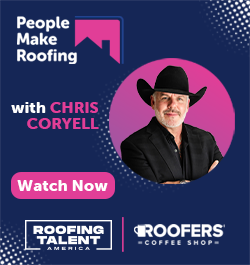
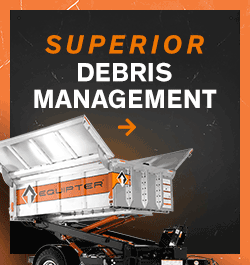









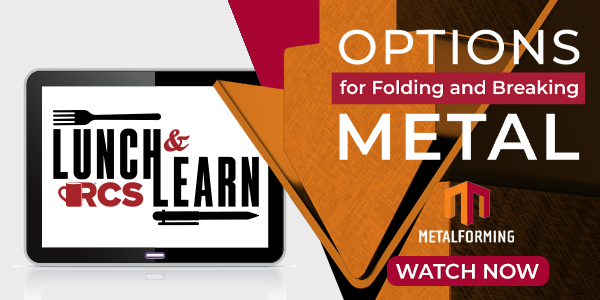
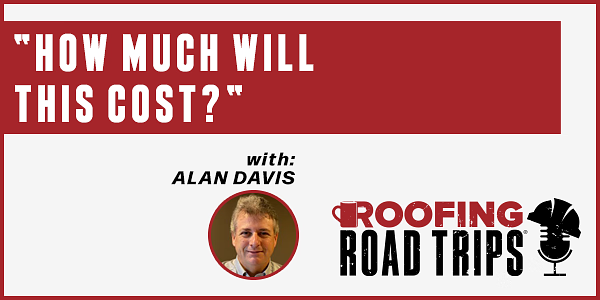
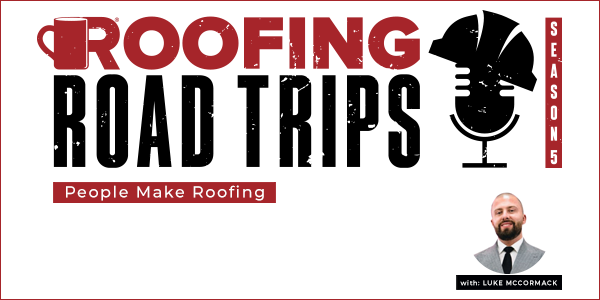
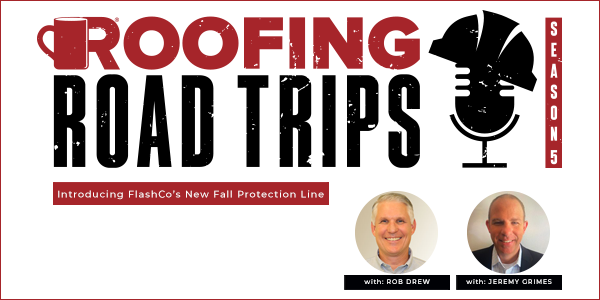


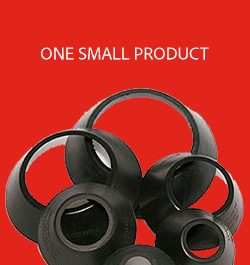

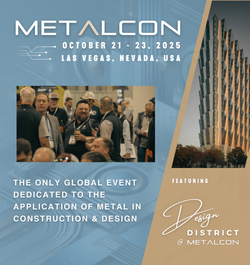

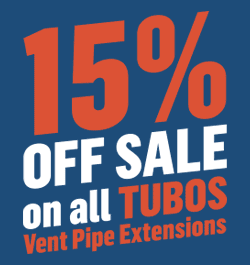
Comments
Leave a Reply
Have an account? Login to leave a comment!
Sign In